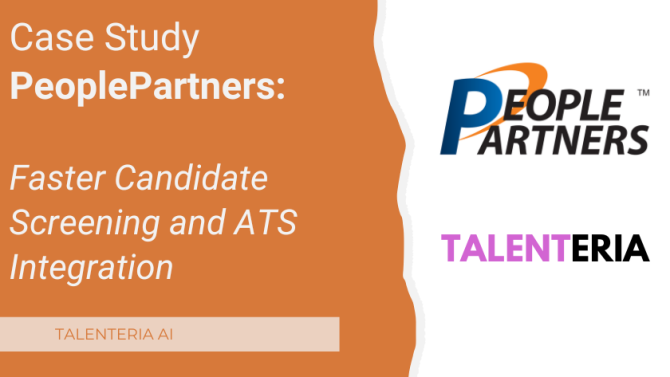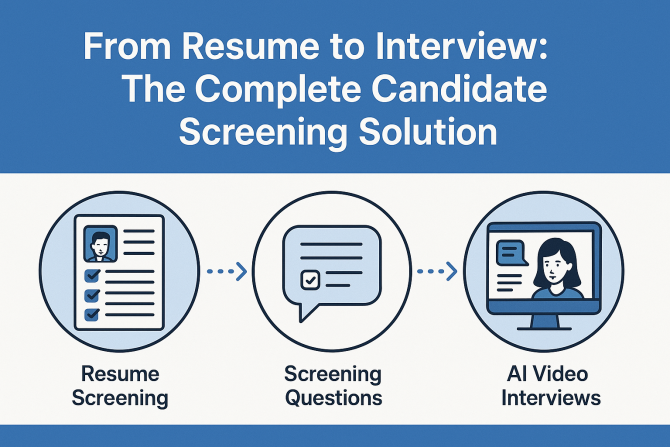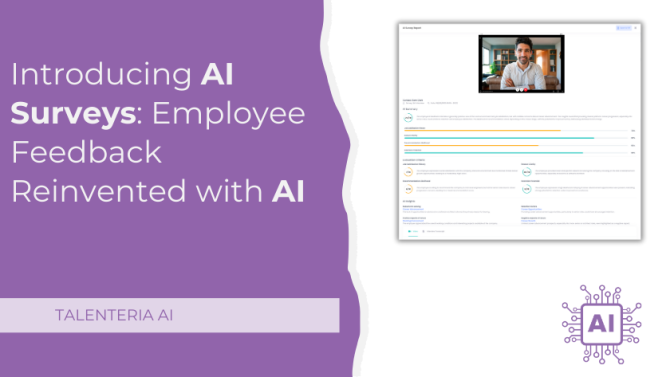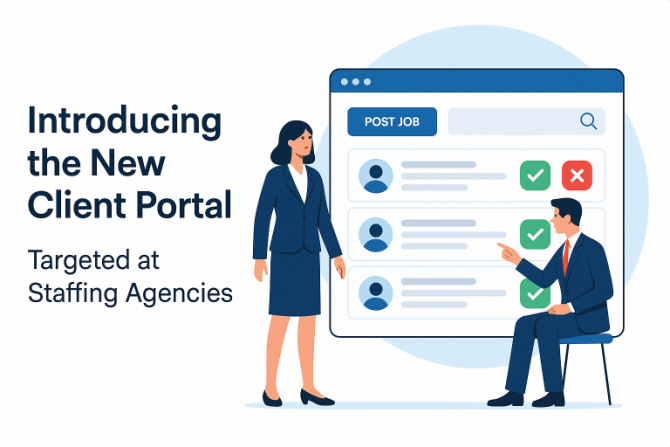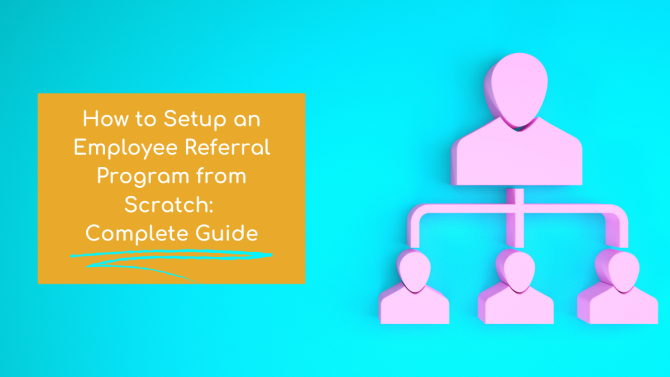
If you’re developing a recruitment strategy, you probably know that there are multiple different sources of candidates for your open positions. While job boards remain among the most popular choices, other options can be more effective and beneficial for your company. Employee referrals are a great example of that.
To make the employee referral process as beneficial for you as possible, your hiring team needs to set up a proper referral program. While it is a challenging task if you’re inexperienced in the field, it might be easier than you think. Let’s explore why it is worth the effort and what your first steps have to be.
The Benefits of Employee Referrals for the Hiring Process
1. Saving of Time
The first major benefit that comes with successful referral programs is that it takes much less time to find a potential fit for your job openings. You won’t have to wait for a response to your job advertisement – you’ll be able to contact the person familiar with all the relevant information immediately.
Furthermore, if you put your main focus into the referral program, you won’t even have to spend time creating those job postings – you will get a diverse talent pool without them. Checking the resumes will also take less time – most of the candidates will definitely have the skills and experience necessary.
Time is the most important asset in our hectic modern world. When it comes to the recruitment process, the value of time cannot be overstated – the sooner the new employer gets to work, the better it is for the whole team. So, using employee referrals is justified just because of the time it saves.
2. Less Money Spent Per Hire
The other resource you save with the referral program is money. Firstly, you don’t have to spend a lot of extra funds to set the system up. The only additional spending you might need to make is the referral bonus your employees would get for suggesting an appropriate person.
Secondly, you will probably cover these additional funds by reducing the overall cost-per-hire. The average employer in the US spends around $4,000 to hire one new worker. Various factors contribute to this cost, including the marketing and in-house recruitment team salaries.
When you employ the referral system, you’re automatically getting rid of some of these contributing factors. You don’t need to spend a lot on marketing, you need less staff to support the system, you don’t need to pay for access to the job boards. This makes the cost-per-hire drastically reduced and you can focus the saved funds on something more important.
3. Higher Quality of Talent Acquisition
Every professional in their respective field has a network of people that work in that same field. So, it is reasonable to request your employees to tap into that network to find a person with a certain level of skill in the area they work in.
Moreover, the people you work with know the requirements for the job you offer and they know the level of skill and knowledge of their acquaintances. It is easier for them to compare the two and figure out, which person suits the job the best.
This is much different from the usual recruitment process. During it, both you and the candidate are basically going in blind. The real test of skill doesn’t come until the work on an actual project starts, and then it might’ve already been too late. So, you should trust your workers to find the right teammate.
4. Better Employee Retention Rate
When you hire a new person, you should be prepared for a chance of them quitting early on in the process. Either because of unexpected challenges connected with their job or because they don’t fit into the company culture, the reasons might vary but the result is the same. You’d need to start the recruitment process from the beginning.
Research shows that referred employees stay with the company much longer. Their better initial fit, determined by a knowledgeable employee, ensures a higher satisfaction in the job they do which, in turn, encourages a longer cooperation period.
A high employee turnover rate is bad for a company for a couple of reasons. Not only does it create an uncertain atmosphere in the team, but it also results in sunken costs. Companies can spend up to 213% of the employee’s annual salary if the position has a high turnover rate. So, this is another way for you to save with a referral program.
5. Employer and Employee Satisfaction
As we’ve already mentioned, the employees gained after successful referrals experience a higher level of satisfaction from their job. They have suitable skills for the project and they often get to work with someone they already know and trust.
What’s also important is that employers experience a higher level of satisfaction by the referred employees as well. It is easier for them to establish a trusting relationship with someone recommended by a trustworthy source.
So, what result can be better than when both sides of the recruitment process are satisfied with what they get? Of course, the referral system does not guarantee a 100% compatibility with every applicant, but nothing really does. The system drastically improves the chances of success and satisfaction, which further supports the previous benefits mentioned.
6. Additional Brand Promotion
As it is with any recruitment strategies, employee referral does not guarantee a positive result. Maybe none of the specialists from your employees’ networks are interested in a job right now. However unlikely, it is still possible. If that’s the case, don’t be upset – there are still benefits to this process.
During the talks about possible employment, your workers will most likely describe your company as a great place to work at. To entice people to apply to a position, they will mention the benefits you provide and how great your team is. Even if it will not persuade people to work with you, it will still strengthen your employer brand.
Through the word of mouth, your status as a great company to work at will sooner or later reach the right person for your open position. So, set up the referral program and use your employees not only as recruiters but as brand ambassadors as well.
Steps and Tips to Establish an Efficient Employee Referral Program
1. Determine Your Needs and Goals
The first step to the success of every project is defining your needs and setting up attainable goals. The same thing concerns the creation of an effective employee referral system. By determining what you need it is easier for you to conceive a detailed plan of action.
During the recruitment process, your main need is probably to fill your open position with a qualified person. To make your course of action clear, you need to determine how many positions you need to fill, how many different departments are involved, and you need to create a view of a perfect candidate persona for each one of them.
Knowing that you can plan on which employees to ask for a referral, which resources you need to allocate, and how much time the process will approximately take. The clearer and more quantifiable of goals you have, the better the results of your estimation will be.
2. Set Up an Automation System
The more positions you have to fill out, the harder it is to track each referral manually. Even if it’s only 10-15 job offerings, each might have 10-15 candidates applying, which can turn the process into a mess if not handled appropriately.
You should also remember that not only do you need to track the applicants, but also your employees who have been referring candidates. The best solution for these problems is an applicant tracking system. These programs are built for the recruitment process as a whole, but they often have built-in tools for employee referrals.
Process automation will also make the job easier for your employees. The system can provide them with an email template with proper contact links and social media channels, which makes sharing the job posting with acquaintances that much easier.
3. Effectively Communicate with Your Employees and Applicants
Your employees are your main tool in this strategy. They will be the ones sharing jobs, and it is your job to encourage them to do so. The first step for that is to be clear and honest about your goals and to share the information with them every step of the way.
If your employees are informed on what’s on the stake, how they can help, and how they will be rewarded for their help, they will be more inclined to participate in the program. Furthermore, by acknowledging the contribution of the most active participants, you may get more people interested in the process.
If you don’t want to lose the attention of high-quality talent, you need to respond to all the applicants promptly and provide them the relevant information as well. Try being flexible and let them decide on the time of the next interview.
4. Define Proper Awards
Another way to encourage your employees to participate in the program is by providing them with bonuses. The easiest and most time-tested solution is a direct payment. However, in recent years companies have been noticing that the increase in the cash bonus doesn’t result in more active employment referral participation.
Turns out, non-cash bonuses are as effective (if not more) as the cash ones. There are multiple options for you to choose from, from a paid vacation to a restaurant dinner. It depends on what’s popular in your company, so just make a survey and provide the most popular prize from a list of suggestions.
Don’t forget to add a personal touch to the reward. It is much better for your employees to know that their contribution is valuable and valued. Provide a personal thank you, mention the best referrals during meetings, or include it in the regular newsletter.
5. Find Creative Ways to Improve Employee Engagement
If you feel that the rewards you provide are not enticing your employees enough, find additional ways to engage them. There are various different creative solutions to this problem. For example, companies often conduct thematic lunches to let their employees know about the new open position. Another fun way to involve your employees is by turning the referral into a competition and rewarding a person who refers the most people. Or create referral cards with a unique design to catch people’s attention. Overall, choose the method that suits your team the most or come up with your own, tailored to your employees.
6. Analyze the Results and Make Adjustments
There is always a way you can improve yourself. If you want your referral program to be great, you probably won’t achieve it at its first iteration. Analyze the results of the program, check on how your new employees fit into the team, define all the mistakes and the right steps made during the process, and determine the changes you would need to make to avoid or repeat them.
If you’ve determined the adjustments you would have to make yourself, provide feedback to your employees as well. You should cooperate with them as much as possible, especially with the active participants of the program. Only then you’ll be successful.
Final Words
Employee referrals are a valuable tool in any recruitment process. They provide a lot of benefits that other job recruitment types do not. The correctly set up a referral system is resource and time-saving. However, to use it to its fullest potential, it needs to be tailored to your company.
All in all, with the tips we’ve provided, now it will be easier for you to set up a referral program from scratch. Remember that your employees are the main tool you’ll be working with, so cooperate with them and communicate effectively every step of the way.
